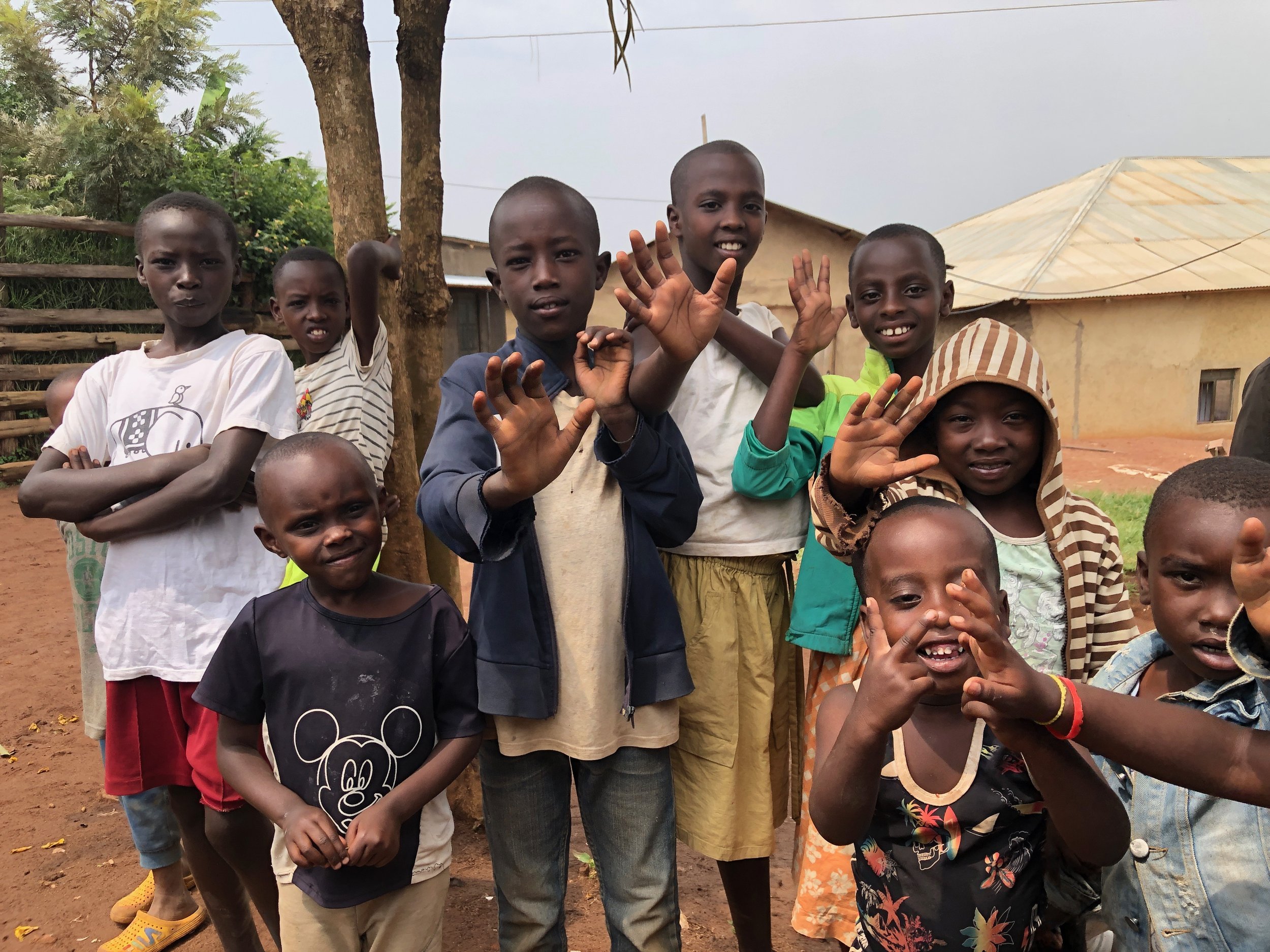Follow the Animal Tracks to Ethiopia
For centuries, rural agro-pastoral communities in Ethiopia like the Dassenech people have depended on the land to raise farm animals and crops. Everything in their daily life—from the food they eat to the produce they sell at the market—comes from their environment, so their survival is heavily reliant on consistent seasonal patterns and rains. However, extreme climate change over the past decade has caused unpredictable droughts and floods. With each year, more and more farmland and animals either disappear underwater or wither away.
Thousands of Dassenech people have been forced to abandon their livelihoods and traditions, and are struggling to adapt to life in new, unknown territories. With no income or support, getting new animals is an insurmountable challenge. That’s why Animal Tracks can have such a big impact!
The homes in Akudogole are made from sheet metal. They were tricky to get into, but really cozy on the inside.
For this first ever Animal Tracks distribution in Ethiopia, Jaron, Roman, and Tara of our operations team travelled to two villages that have been hit hard by floods: Lokoro and Akudogole. Many of the participating families were led by mothers or people with disabilities, as we wanted to focus our impact on the most vulnerable households. Each family was also given the option to choose between chickens or goats, depending on their own preferences and experiences.
As we sat with Juluk in her home, she told us about her favorite dish, corn flour porridge, and how she’ll be able to make it with milk thanks to her new goats.
Throughout the distribution, the team sat with Dassanech women to hear their stories and plans for their new animals. Many expressed how difficult it was to rebuild from nothing, and how disorienting life felt in a new place without their animals and traditions.
By the end of the distribution, 200 households received new goats and chickens that they will use for reliable food and income. Our project also includes extensive training and follow-ups for families to ensure that they’re able to succeed in this new chapter. For people who have been forced from their land and homes, these farm animals are a step forward in rebuilding their lives.
Getting ready to distribute goats to families in Bweyale, Uganda.
Follow the Animal Tracks Across Uganda
After concluding their work in Ethiopia, Roman and Tara travelled southwest to Uganda. We expanded Animal Tracks to Uganda in 2024, so we were already familiar with the country and its needs. This time, however, we would be holding distributions in two new locations for new communities in the country.
The team’s first stop was the isolated Kiryandongo refugee camp in Bweyale. In October 2024, we visited Kiryandongo to distribute school supplies for Sudanese and South Sudanese children, whose families have come to Uganda seeking safety from extreme violence.
Snapping a few selfies during last year’s school supplies distribution in Bweyale.
Since 2023, a devastating civil war between two major rival factions of Sudan’s military government has displaced more than 12.5 million people, resulting in one of the world’s largest humanitarian crises. Of that number, over 100,000 thousand Sudanese people have fled to neighboring Uganda, the largest host country for refugees in Africa. However, despite Uganda’s welcoming policies to refugees, resources are strained, and many refugees struggle to reclaim the livelihoods that they were forced to leave behind.
Since we visited Kiryandongo last year, we were incredibly excited to continue our impact in the area through livestock. Kiryandongo is especially cut off from aid compared to other refugee camps in Uganda, so it was even more meaningful for our team to return with goats! With this distribution, 100 families now own two goats each, which they can use to produce milk for cheese and yogurt—both to feed themselves and sell at the market for a stable income.
Preparing for our goat distribution in Gulu.
Making Animal Tracks from Bweyale to Gulu
From Bweyale, the team headed further north to Gulu city, home to a large population of internally displaced Ugandans. For two decades, from 1987 to 2006, guerilla warfare between militant groups and the Ugandan government resulted in a lasting humanitarian crisis throughout northern Uganda. The pain caused was widespread and severe, with civilians subjected to torture, abductions, sexual violence, and massacres. Thousands of Ugandans were forced to leave their belongings and homes behind. Many of the people who were displaced to Gulu are still struggling to rebuild their lives, and the area’s poverty has been exacerbated by the influx of refugees from violent conflicts in neighboring countries.
Our distribution in Gulu was a bit smaller—50 goats for 25 households—than the one in Bweyale, but will still have an immense impact. We specifically focused on connecting with the female heads of multigenerational households, so that the effects of their new animals would be multiplied across families. Our team sat alongside the women as they attended a professional training with a vet—it was clear how excited they were to take good care of their new goats.
We started Animal Tracks with goats for Syrian refugees in Jordan way back in 2017, and we’ve come a long way since! With each distribution, Animal Tracks is helping more families take a step toward stability and self-sufficiency. Whether we’re reaching remote communities displaced by climate change or sitting with families who’ve fled extreme violence, our goal remains the same—to equip refugees with the resources needed to rebuild and thrive.





















